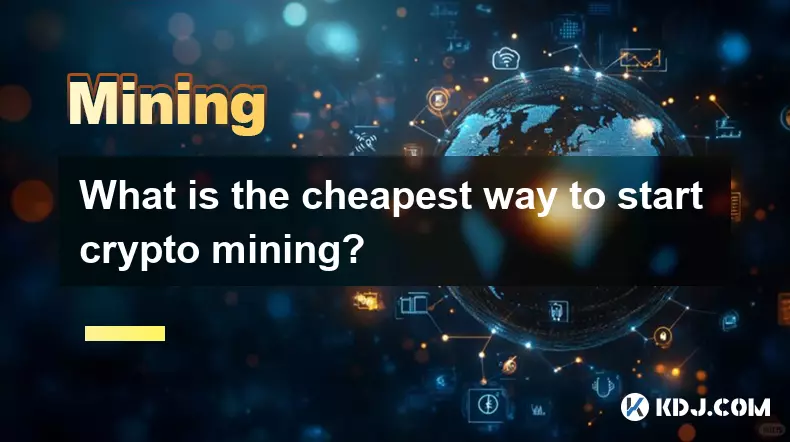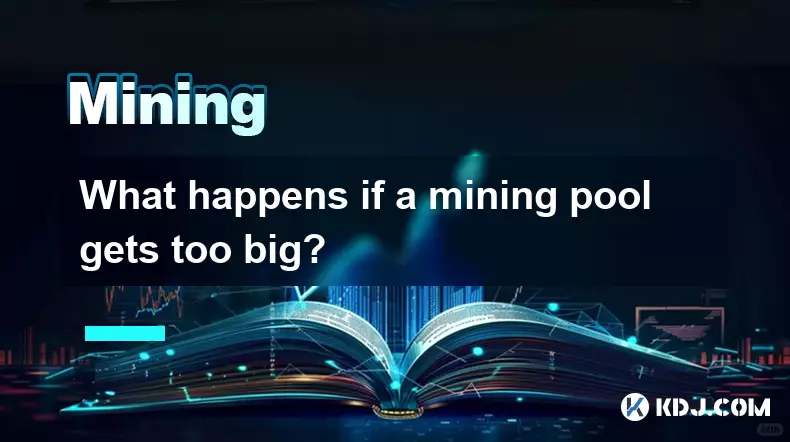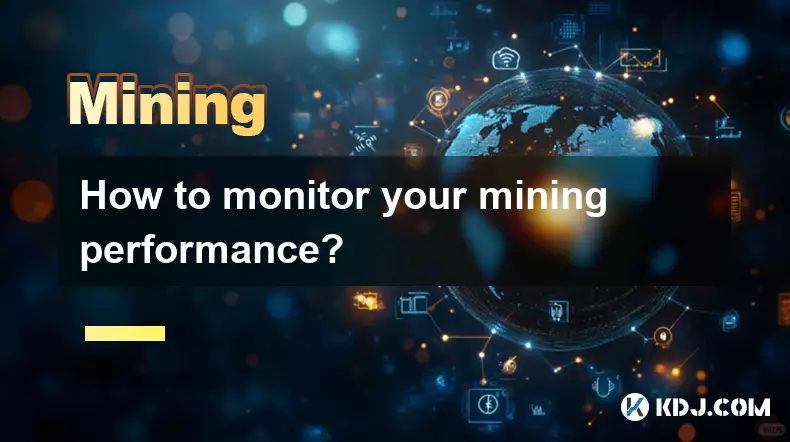-
 bitcoin
bitcoin $99177.955738 USD
-7.32% -
 ethereum
ethereum $3187.183061 USD
-12.38% -
 tether
tether $0.999809 USD
0.00% -
 xrp
xrp $2.117933 USD
-9.42% -
 bnb
bnb $906.710033 USD
-9.17% -
 solana
solana $149.367737 USD
-10.74% -
 usd-coin
usd-coin $0.999816 USD
0.01% -
 tron
tron $0.281498 USD
-0.38% -
 dogecoin
dogecoin $0.156292 USD
-8.00% -
 cardano
cardano $0.500744 USD
-10.19% -
 hyperliquid
hyperliquid $38.087358 USD
-4.58% -
 chainlink
chainlink $14.097831 USD
-8.54% -
 bitcoin-cash
bitcoin-cash $463.329916 USD
-9.22% -
 ethena-usde
ethena-usde $0.999078 USD
-0.01% -
 unus-sed-leo
unus-sed-leo $9.475862 USD
-0.79%
Mining Pool Payout Methods (PPLNS vs. PPS): A Guide to Choosing the Best.
PPLNS rewards miners based on recent contributions before a block is found, offering higher payouts during lucky streaks but with greater income variance compared to the stable, share-based payments of PPS.
Nov 05, 2025 at 12:55 am

Mining Pool Payout Methods Overview
1. Mining pools allow individual cryptocurrency miners to combine their computational power and increase the likelihood of solving a block. The rewards are then distributed among participants based on specific payout models. Two of the most widely used methods are Pay Per Last N Shares (PPLNS) and Pay Per Share (PPS). Each approach has distinct mechanisms that affect miner earnings, risk exposure, and long-term profitability.
2. PPS offers immediate and predictable payments for each valid share submitted by a miner. This model transfers much of the variance risk from the miner to the pool operator, ensuring stable income even during periods when the pool fails to find blocks. Miners appreciate this consistency, especially in volatile market conditions where cash flow stability is crucial.
3. In contrast, PPLNS calculates rewards based on the last N shares submitted before a block is found. This means miners are only paid when the pool successfully mines a block, and their reward depends on how recently they contributed computational effort. It introduces more variance but can yield higher returns during lucky streaks when blocks are found frequently.
4. The choice between PPLNS and PPS often reflects a miner’s risk tolerance and operational goals. Those running large-scale mining farms with tight profit margins may lean toward PPS for its reliability. Smaller or independent miners might opt for PPLNS if they're willing to accept short-term fluctuations in exchange for potentially greater payouts over time.
How PPS Works and Its Implications
1. Under the PPS system, miners receive a fixed amount for every valid share they submit, regardless of whether the pool finds a block. The payment rate is calculated using the current network difficulty, block reward, and an estimate of how many shares are needed to solve a block on average.
2. Because the pool operator assumes the statistical risk of block-finding variance, they typically charge higher fees or deduct a premium from each payout. This cost ensures the pool remains solvent during dry spells and maintains trust with its members.
3. Miners using PPS experience consistent revenue streams, making it easier to manage electricity costs and hardware depreciation. This predictability supports better financial planning, particularly for operations dependent on steady income to cover overhead.
4. However, PPS pools may become unprofitable for operators during prolonged periods without blocks, leading some to impose withdrawal limits or shut down entirely. Miners must consider the reputation and longevity of a pool before committing resources under this model.
5. Another downside is that PPS does not reward loyalty or sustained contribution. A miner who contributes heavily just before a block is found receives no bonus compared to someone who submitted one share. This lack of incentive alignment can reduce motivation during low-activity periods.
The Mechanics and Appeal of PPLNS
1. PPLNS focuses on the sequence of shares submitted in the window leading up to a block discovery. Only those who contributed within this “last N” window receive a portion of the reward, with payouts proportional to their share count.
2. This method discourages pool hopping, as miners must remain connected and actively contributing to have a chance at earning. Frequent disconnections or switching between pools will reset a miner’s position in the queue, reducing potential gains.
3. During high-luck phases—when a pool finds multiple blocks in quick succession—PPLNS miners can earn significantly more than they would under PPS. This performance-based structure rewards persistence and aligns incentives between miners and the pool.
4. The downside lies in the increased variance. If the pool goes through a long period without finding blocks, miners earn nothing despite continuous work. This unpredictability can strain budgets, especially for those operating on thin margins.
5. Some variations of PPLNS adjust the depth of the share window dynamically based on recent block findings, aiming to smooth out earnings while preserving fairness. These adaptive systems attempt to balance risk and reward more effectively than static implementations.
Comparing Risk, Reward, and Operational Fit
1. The fundamental trade-off between PPLNS and PPS revolves around risk distribution. PPS shifts uncertainty to the pool operator in exchange for lower expected returns, while PPLNS keeps risk with the miner but offers upside during favorable conditions.
2. Large mining farms with access to cheap power and efficient hardware often prefer PPLNS because their scale allows them to absorb variance. Over time, consistent operation increases the probability of being in the reward window when blocks are found.
3. Small miners or those in regions with expensive electricity may prioritize stability over potential windfalls. For these users, PPS provides a safer environment, protecting against income gaps that could jeopardize operational sustainability.
4. Pool fees also differ across models. PPS usually carries higher effective fees due to the insurance-like nature of guaranteed payments. PPLNS fees tend to be lower, but actual take-home pay fluctuates depending on pool luck and individual contribution timing.
5. Network congestion and block propagation delays can indirectly impact both systems. In PPLNS, delayed share registration might push contributions outside the payout window, reducing earnings unfairly. Reliable connectivity and low-latency connections are essential to maximize returns.
Frequently Asked Questions
What happens to my shares if the pool doesn’t find a block in PPLNS?If the pool fails to discover a block, no rewards are distributed, and all shares in the current window expire unused. Miners earn nothing for that period, which highlights the inherent variance of the PPLNS model.
Is PPS always less profitable than PPLNS?Not necessarily. While PPLNS can yield higher payouts during lucky runs, PPS often results in better cumulative earnings during unlucky stretches. Profitability depends on pool performance, network conditions, and individual uptime.
Can I switch between PPLNS and PPS mid-mining session?No, payout methods are set at the pool level. To change models, you must disconnect from one pool and connect to another that supports your preferred method. Switching frequently may disrupt hash submission and reduce overall efficiency.
Do all cryptocurrencies support both PPLNS and PPS?Most proof-of-work coins offer at least one of these models, but availability depends on the pool operator's infrastructure and risk management policies. Popular networks like Bitcoin and Ethereum Classic typically have pools supporting both.
Disclaimer:info@kdj.com
The information provided is not trading advice. kdj.com does not assume any responsibility for any investments made based on the information provided in this article. Cryptocurrencies are highly volatile and it is highly recommended that you invest with caution after thorough research!
If you believe that the content used on this website infringes your copyright, please contact us immediately (info@kdj.com) and we will delete it promptly.
- XRP ETF Race Heats Up: FTI Filing Sparks November Launch Buzz
- 2025-11-05 18:45:01
- Crypto's US Liquidity Crisis: Bitcoin's Wild Ride and What's Next
- 2025-11-05 19:00:02
- Bybit, Block Scholes, and Crypto Derivatives: Navigating the Evolving Landscape
- 2025-11-05 19:10:01
- MARA Dumps, Bitcoin Pullback End? Decoding the Crypto Market's Latest Moves
- 2025-11-05 19:45:01
- Bitcoin Dip? Time to Buy Bitcoin, Maybe!
- 2025-11-05 19:45:01
- Crypto ETFs, Bitcoin, and Solana: A New York Minute on Shifting Tides
- 2025-11-05 19:50:01
Related knowledge

What is the history of Bitcoin mining?
Nov 05,2025 at 08:15pm
Within the fast-moving world of cryptocurrency, new developments emerge daily, reshaping how investors, developers, and institutions interact with dig...

What are the main components of a mining rig?
Nov 05,2025 at 08:09pm
Main Components of a Mining Rig1. A mining rig consists of several essential hardware components designed to solve complex cryptographic equations req...

What is the cheapest way to start crypto mining?
Nov 05,2025 at 08:04pm
Understanding Low-Cost Crypto Mining Options1. Utilizing older GPUs or repurposed gaming computers offers a practical entry point into mining without ...

What happens if a mining pool gets too big?
Nov 05,2025 at 07:54pm
Concentration of Power in a Single Pool1. When a mining pool accumulates a significant portion of the network's total hash rate, it gains disproportio...

How to monitor your mining performance?
Nov 05,2025 at 07:39pm
Understanding Mining Performance Metrics1. Hash rate is one of the most critical indicators of mining performance. It measures the computational power...

How does Helium mining work?
Nov 05,2025 at 07:50pm
Understanding Helium Mining Basics1. Helium mining is not traditional cryptocurrency mining that relies on solving complex mathematical problems using...

What is the history of Bitcoin mining?
Nov 05,2025 at 08:15pm
Within the fast-moving world of cryptocurrency, new developments emerge daily, reshaping how investors, developers, and institutions interact with dig...

What are the main components of a mining rig?
Nov 05,2025 at 08:09pm
Main Components of a Mining Rig1. A mining rig consists of several essential hardware components designed to solve complex cryptographic equations req...

What is the cheapest way to start crypto mining?
Nov 05,2025 at 08:04pm
Understanding Low-Cost Crypto Mining Options1. Utilizing older GPUs or repurposed gaming computers offers a practical entry point into mining without ...

What happens if a mining pool gets too big?
Nov 05,2025 at 07:54pm
Concentration of Power in a Single Pool1. When a mining pool accumulates a significant portion of the network's total hash rate, it gains disproportio...

How to monitor your mining performance?
Nov 05,2025 at 07:39pm
Understanding Mining Performance Metrics1. Hash rate is one of the most critical indicators of mining performance. It measures the computational power...

How does Helium mining work?
Nov 05,2025 at 07:50pm
Understanding Helium Mining Basics1. Helium mining is not traditional cryptocurrency mining that relies on solving complex mathematical problems using...
See all articles










































































